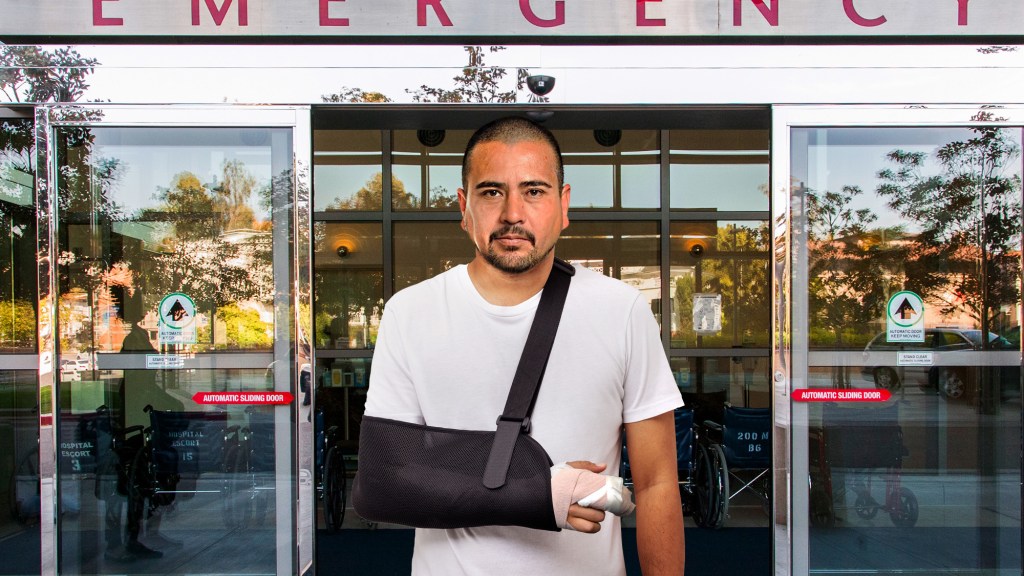WASHINGTON—Offering vocal criticism of the aging transit network and its continued failure to meet their transportation needs, frustrated citizens nationwide are calling upon federal officials this week to at long last update the country’s obsolete zip-line infrastructure.
Advocates for reform, whose demands have grown louder in recent years, have assailed America’s decades-old system of ladders, poles, platforms, and galvanized steel rope as inadequate, arguing that the current infrastructure provides limited and inconvenient options for low-altitude carabiner-and-cable-based travel across the United States.
“As it stands, our current zip-line infrastructure must be rebuilt from the ground up if zip-lining is to remain viable for the millions of workers, students, and business travelers who rely on it every day,” American Public Transportation Association president Michael Melaniphy told reporters. “Right now, if someone wants to travel by zip-line, they must crowd into long lines and wait for extended periods before riding along a patchwork of rusty cables and end posts, many of which haven’t been refurbished since they were first erected in the 1950s. Frankly, the fact that we’re still commuting on the same zip-line technology our grandparents used is embarrassing for a nation as advanced as ours.”
“We can and must do better than this,” Melaniphy continued. “Ideally, anyone should be able to throw on a helmet and a pair of close-toed shoes, take a deep breath, and let gravity zip them away to their home or place of business without having to walk miles to their nearest launch platform or face interminable delays due to antiquated lines’ weight limits.”
According to several recent surveys, the public’s frustration stems largely from the aerial transit system’s failure to accommodate the growing number of harnessed and strapped-in travelers. Additionally, transportation experts cite the network’s degrading cable clamps, frequent maintenance-related delays, and multipage liability waivers as further reasons why the nation’s zip-line network must be updated.
“All I want is a simple, hassle-free transit system that will let me soar above the tree canopy to the places I need to go, and maybe also a camera to snap my picture as I stick out my tongue and flash a ‘hang loose’ sign while I’m at it.”
As part of their calls for modernization, travelers have also demanded such innovations as greater inclines for faster zips, high-capacity cables that can send hundreds of passengers sailing through the air at the same time, and zip-lines with grippable T-bars that come to an abrupt halt mid-line, causing riders to lose their handhold and plunge into bodies of water below.
“Every morning when I clip myself to the cable before work, I know I’m going to be standing up there on the platform forever just waiting for my turn,” said Oakland, CA resident Matthew Marshall, adding that, even after he leaps off, he too often finds himself stuck dangling in place when his zip-line sags. “If they could just put in one direct, high-speed zip-line across the bay so that I could quickly get between here and my job in San Francisco, it would make my life so much easier and shave hours off my zip-line commute each day.”
“Unfortunately, installing new zip-lines between major cities seems to be our elected officials’ lowest priority,” he added.
Experts claim that failing to modernize the nationwide zip-line grid is likely to have a number of negative and costly repercussions beyond simply inconveniencing the millions who currently use the gravity-propelled transit system as their primary form of transit. In particular, environmental watchdog groups have warned that the lack of fast, reliable zip-lines will inevitably lead millions to turn to such fuel-intensive modes of transportation as dune buggies, hovercraft, and zeppelin-share programs.
A number of independent reports published in recent years have recommended that the U.S. take cues from the extensive zip-line infrastructure in Europe, where citizens regularly swoop from city to city while gliding beneath a five-eighths-inch steel wire.
“All you have to do is look at all the people zipping through the air above France and Germany to realize just how far behind we are,” said Cincinnati resident Marsha Adams, referring to the comprehensive network of ultrafast zip-lines that have been carrying passengers between London, Paris, Stockholm, and thousands of other locations across the continent since the early 1980s. “It’s the 21st century, for God’s sake. All I want is a simple, hassle-free transit system that will let me soar above the tree canopy to the places I need to go, and maybe also a camera to snap my picture as I stick out my tongue and flash a ‘hang loose’ sign while I’m at it.”
“Honestly though, with the way things are now, it usually makes more sense to just fork over the extra cash and strap on a wingsuit,” she added.







